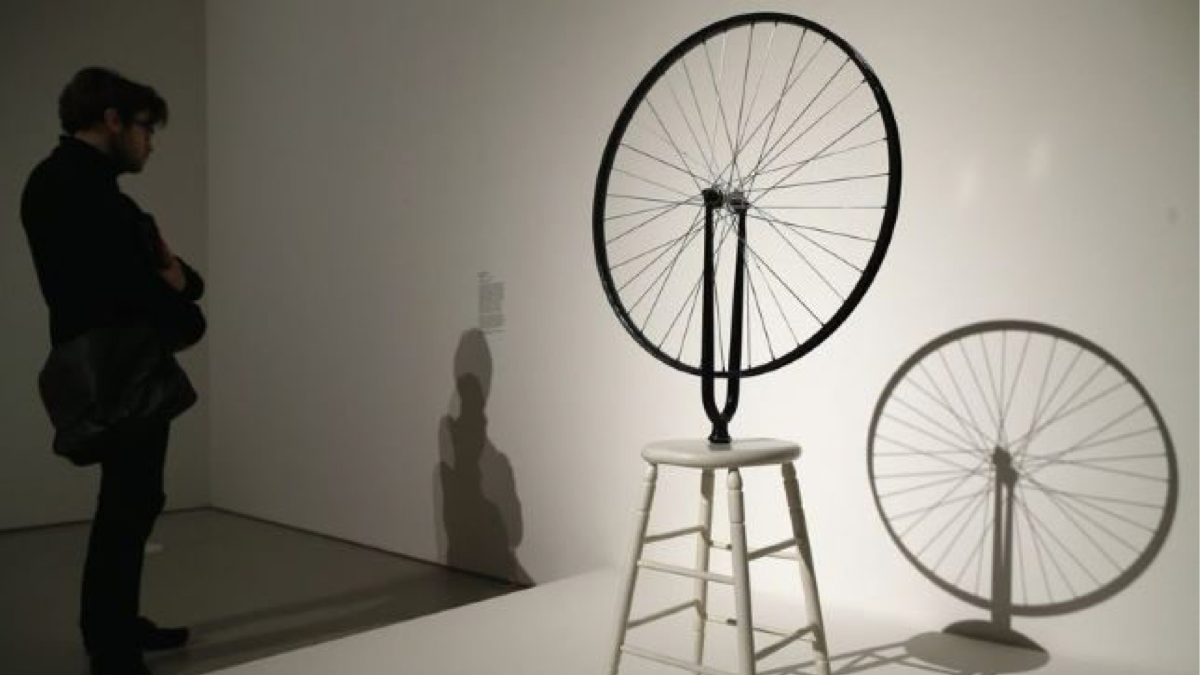
10 Readymades you must know

‘Can one make artworks which aren’t art?’ This was the question Marcel Duchamp (1887-1968) was asking himself when he made his first readymade, Bicycle Wheel in 1913. But what exactly is a readymade? In his 1929 Dictionnaire abrégé du Surréalisme, André Breton defined a readymade as a ‘manufactured object raised to the dignity of works of art through the choice of the artist’. Although the readymade was not created by the artist, the latter appropriates it, and in the process the object loses its function as an object to become a work of art. The concept revolutionised the idea of an artwork in the 20th century. Today, Artsper presents 10 readymades that you must know, made by the father of conceptual art, Marcel Duchamp.
1. Bottle Rack

‘This choice was motivated by a reaction of complete visual indifference, linked to a complete lack of good or bad taste… in fact a total anaesthesia’ (M. Duchamp, ‘About readymades’ (A propos des readymades), in Duchamp du signe. Écrits de l’artiste réunis et présentés par Michel Sanouillet, Paris, Flammarion, 1975 ; rééd. 1994, coll. « Champs », p. 191). Marcel Duchamp bought a bottle rack at the Bazar de l’Hôtel de Ville (BHV) in 1914. Bottle Rack is considered by the artist to be his first readymade. Like most of the readymades, Bottle Rack was lost and remade in 1960 under Duchamp’s direction.
2. Bicycle wheel
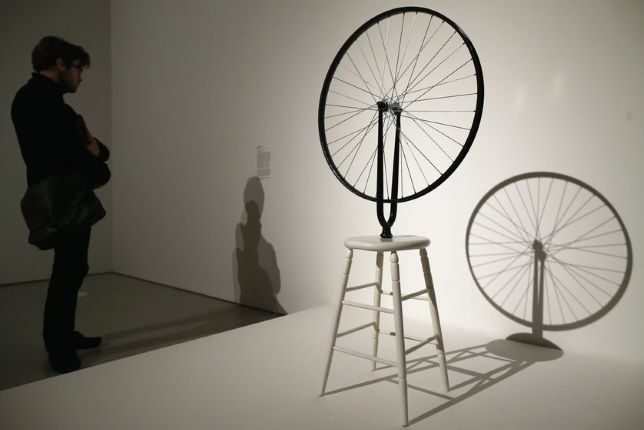
‘When I put a bicycle wheel upside down on a stool, I didn’t have anything in mind, neither a readymade nor anything else’. Duchamp’s very first readymade, it was not originally considered as such by the artist. Bicycle wheel was created 1913 in the artist’s studio in Neuilly. The work resulted from a bricolage between a stool and bicycle wheel. It begs the question of the nature of artworks and of the artist’s role. Eight copies of this work were then made, with the help of Italian craftsmen.
3. Air de Paris

This work by Duchamp is a carving made in glass and in wood, and creates a vial which contains Parisian air. Initially made in 1919 in Paris, it’s in the Schwarz Gallery, located in Milan, that the replica of this work was realized in 1964 – under Duchamp’s supervision. This last edition was the fourth replica of Air de Paris. The work’s medical character is highlighted by the shape of the vial.
4. Unhappy readymade

‘It was a geometry book, which he had to hang by strings on the balcony of his apartment in the rue Condamine; the wind had to go through the book, choose its own problems, turn and tear out the pages. Suzanne did a small painting of it, ‘Marcel’s Unhappy Readymade.’ That’s all that’s left, since the wind tore it up. It amused me to bring the idea of happy and unhappy into readymades, and then the rain, the wind, the pages flying, it was an amusing idea…’ (Marcel Duchamp, Entretiens, p.105). This is how Marcel Duchamp described his Unhappy readymade, which he created for his sister when he was unable to attend her wedding.
5. Belle haleine. Eau de Voilette
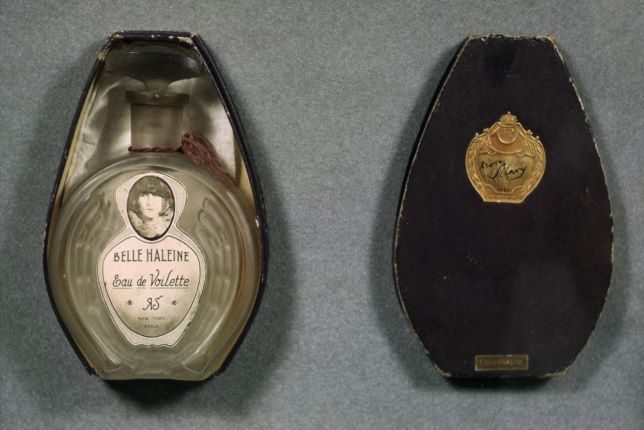
Made in 1921, Beautiful Breath: Veil Water is Duchamp’s second readymade, assisted by Man Ray who took the portrait of Rrose Sélavy (Duchamp’s female alter ego) which can be seen on the perfume bottle. The work is also signed by Rrose. The bottle is borrowed from a famous perfume by the Rigaud house, ‘Un air embaumé’. In 1919, Duchamp got his hands on this bottle and decided to create a readymade out of it. He therefore made a new label on which one could read ‘Beautiful Breath. Veil Water’ – a wordplay in French on the similarities between the words Hélène (Helen) and haleine (breath), and violette (violet) and voilette (veil) – which showed his taste for childish jokes. In 1990, this work was acquired by Yves Saint Laurent and Pierre Bergé, and was sold again in 2009 for 8.913.000 euros.
6. Peigne
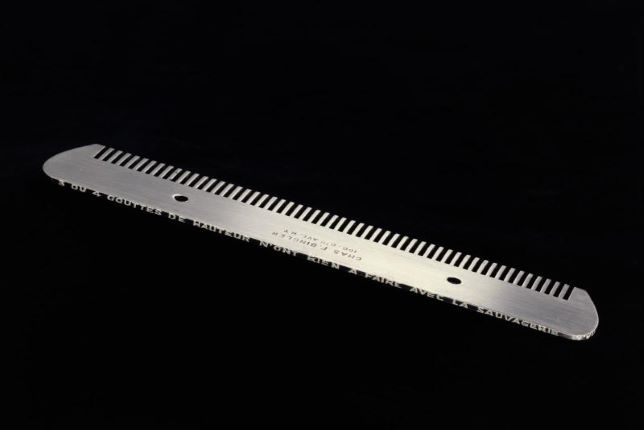
Made of steel, Peigne (Comb) is one of Duchamp’s well known readymades. It is simply a comb, with the sentence ‘3 ou 4 gouttes de hauteur n’ont rien à faire avec la sauvagerie’ (3 or 4 drops of height have nothing to do with savagery). Created in 1916 in New York, the original piece was eventually lost. However a replica of the work was made in 1964 by the Schwarz gallery under the artist’s supervision, which was the third copy of Peigne. This last version is currently exhibited at the Pompidou Centre in Paris.
7. Trébuchet

‘There was a coat hook there, on the floor, a real coat rack that I sometimes truly wanted to hang up on the wall; but I never managed to, therefore it stayed there on the floor, and I kept stumbling over it ; it was driving me insane and I thought: I’ve had enough; if it wants to remain on the floor and keep bothering me, agreed, I will nail it down and it will just remain there…’. This readymade was made in 1917, using a wood and metal coat rack. The work is nailed to the floor, hence the title ‘Trébuchet’, a word play with the French word for stumbling, trébucher.
8. À bruit secret
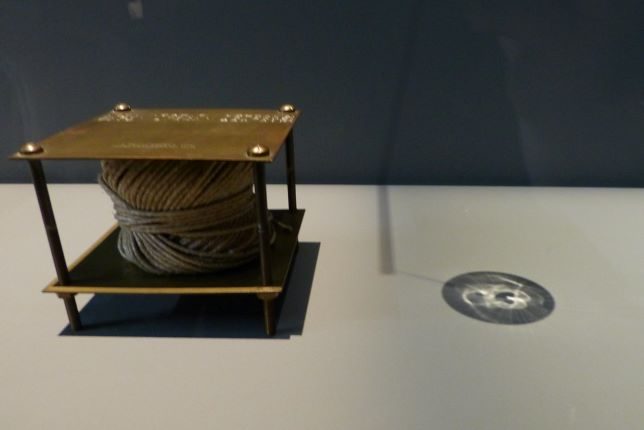
Resulting from a collaboration with Walter Arensberg (1878-1954) and Sophie Treadwell (1885-1970), A bruit secret is a collective readymade, that Duchamp created in 1916, using a ball of string placed between two black brass plates. The work contains an object.
9. Why Not Sneeze Rrose Sélavy ?

This piece, made in 1921, is a painted metal birdcage, within which Duchamp placed various objects including 152 white cubes made of marble, a mercury thermometer, a piece of cuttlebone, and a tiny round porcelain dish. The original work, like most of Duchamp’s, was lost, and it was once again the Schwarz gallery which made the third version of this readymade in 1964.
10. Fontaine

Oeuvre la plus controversée du XXe siècle, Fontaine est le plus célèbre ready-made de Marcel Duchamp. Fontaine est en réalité un urinoir inversé en porcelaine. L’oeuvre est signée R.Mutt en peinture noire. Datant de 1917, elle fut refusée lors de la première exposition de la Société des artistes indépendants de New York. Aujourd’hui, il n’existe que des répliques réalisées entre 1950 et 1960 de l’oeuvre qui serait disparue au cours de l’année 1917.
Partner Read on Beaux-Arts Magazine (in French) Marcel Duchamp en 3 minutes

About Artsper
Founded in 2013, Artsper is an online marketplace for contemporary art. Partnering with 1,800 professional art galleries around the world, it makes discovering and acquiring art accessible to all.
Learn more













